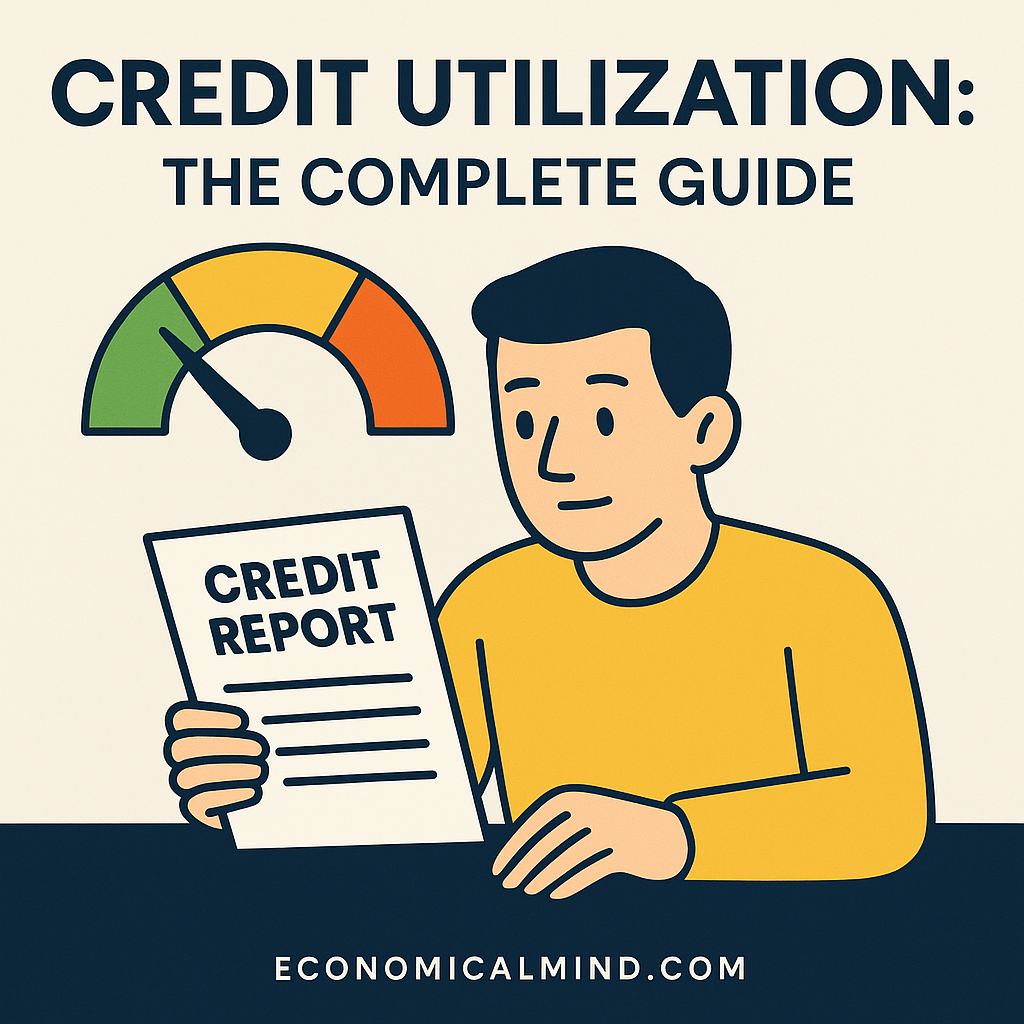
Your credit utilization ratio is one of the biggest factors that determine your credit score — yet many people don’t fully understand how it works. Managing it wisely can boost your score, lower borrowing costs, and make lenders see you as a responsible borrower.
What Is Credit Utilization?
Credit utilization is the percentage of your available credit that you’re currently using. It measures how much credit you’ve tapped compared to your total credit limit.
Example:
If your total credit limit across all cards is $10,000 and you’ve used $3,000, your credit utilization rate is 30%.
Lenders use this ratio to assess your credit behavior. A lower percentage suggests you’re managing credit responsibly and not overspending.
Why Credit Utilization Matters
Credit utilization makes up about 30% of your FICO credit score, second only to payment history. Keeping your utilization low shows lenders you can handle credit without relying on it too heavily.
High utilization can signal financial stress — even if you pay off balances on time.
Rule of Thumb: Keep your utilization under 30% — ideally under 10% for top credit scores.
Pros of Managing Credit Utilization Well
1. Higher Credit Scores
Low utilization often leads to better credit scores.
Example: Someone using 10% of their limit will likely score higher than someone using 80%.
2. Easier Loan Approvals
Lenders see you as lower risk when you use less of your available credit.
Example: A low ratio helps qualify for mortgages or auto loans with better rates.
3. Lower Interest Rates
Strong credit scores mean cheaper borrowing costs on loans and credit cards.
4. More Financial Flexibility
Low utilization gives you room to handle emergencies without maxing out cards.
5. Better Credit Card Rewards
When you manage balances well, you can take advantage of perks and cash-back programs without risk.
Cons of High Credit Utilization
1. Lower Credit Scores
Using too much of your available credit signals risk — even if you make payments on time.
Fix: Pay down balances before the statement date.
2. Higher Interest Costs
Carrying large balances can lead to high interest charges if not paid in full.
Fix: Aim to pay off balances monthly.
3. Harder to Get New Credit
Lenders may hesitate to approve new cards or loans if you appear overextended.
Fix: Lower existing balances before applying for new credit.
4. Potential Debt Spiral
High balances can make it harder to pay off debt completely.
Fix: Use snowball or avalanche methods to reduce balances faster.
5. Emotional Stress
High utilization can create anxiety or limit your sense of financial control.
Fix: Automate payments and track usage regularly.
Best Practices to Improve Credit Utilization
1. Keep Utilization Under 30%
The lower, the better. If your limit is $10,000, try to stay under $3,000.
2. Pay Balances Early
Credit card issuers report balances monthly — pay before the statement closes for best results.
3. Request Credit Limit Increases
Higher limits lower your utilization automatically (as long as spending doesn’t increase).
4. Spread Balances Across Cards
Avoid maxing out one card — use multiple cards lightly to reduce ratios.
5. Avoid Closing Old Cards
Old accounts increase your total credit limit, which improves utilization.
6. Track Progress Monthly
Use credit monitoring apps to see how changes affect your score.
7. Pay More Than Once a Month
If you use credit heavily, multiple payments keep balances low between billing cycles.
8. Keep New Applications Limited
Each new card triggers a hard inquiry — apply strategically.
9. Combine with On-Time Payments
Low utilization only helps if payments are made consistently and on schedule.
10. Be Patient
Credit scores improve gradually as utilization drops — steady effort pays off.
Key Takeaway
Credit utilization is one of the easiest credit score factors to control — and one of the most powerful. By keeping balances low and paying early, you can build a stronger credit profile and save thousands in future interest costs.
